Articles

6 Seasonal Strategies for Worker Well-Being
The holiday season is a time for family and celebration, but it is also one of the busiest times of year. Stress can easily creep in, creating safety hazards at work and at home. Staying mentally alert and focused during this period is key to preventing incidents.
Personal finances are among the most common seasonal stressors that can distract us during critical moments that demand our full attention. Time management, too, often becomes an issue in December as we push to meet year-end deadlines while juggling an assortment of social obligations. Disrupted schedules have the power to wreak…
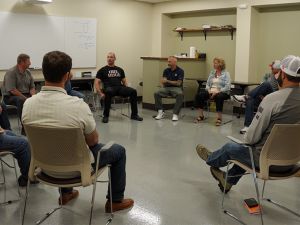
Inspecting the Fifth Wire: Winning the War on Lineworker Suicide
Lineworkers confront daily risks many can’t imagine – arc flashes, falls, electrocutions and more. Yet there’s a silent, insidious threat currently claiming more lives in the electric utility industry than any physical injury.
We’re talking about suicide.
Safety professionals dedicate their careers to mitigating risk and preventing harm, understanding that serious injuries and fatalities devastate lives and ripple through the workforce. But what if the most devastating injury of all is one largely overlooked in traditional safety programs?
Industry employers already deliver tradition…
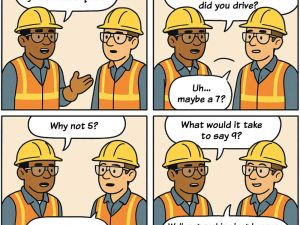
When the System Isn’t Enough: How to Create Personal Motivation That Saves Lives
Author’s Note: In this article – the first in a five-part series – we explore the notion of accepting 100% accountability for our safety at work, just as we do at home. This is an act of self-preservation. The hope is that management’s safety focus will overlap with our own preparation. We want as much overlap as possible.
The next article will address mental preparation, which is different than mental health. It’s a targeted focus to reduce risk of serious injuries and fatalities by improving our ability to remain self-aware and vigilant. We must keep our heads in the game.
When you’ve…
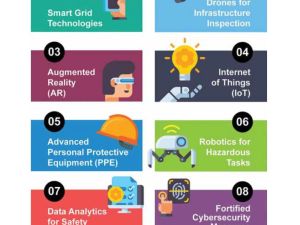
Forecasting the Future of Utility Safety: 10 Predictions for 2026 and Beyond
As we stand on the precipice of a new era in the utility sector, it is clear the future holds transformative potential driven by relentless technological progress.
We are already seeing not just small changes but a complete overhaul. The horizon is replete with innovations aimed at redefining safety protocols and operational efficiency. Predicted advancements – ranging from connected monitoring systems to augmented reality (AR) training to robotics – point to a not-so-far-off future in which advanced technologies will be essential to everyday utility operations.
In the remainder of this…

Safety By Design: Evaluation and Effective Action
The previous articles in this series outlined the essential components of a strong safety management system (SMS). To achieve safety success, electric power organizations must ensure those components align with and support one another.
This article – the last in the series – addresses two final topics of importance: assessing an organization’s SMS performance and implementing a structured corrective action plan in response to identified performance gaps. We will use ANSI/ASSP Z10-2019, “Occupational Health and Safety Management Systems,” as a guide, focusing on performance measurements, in…

2025 Update: Ferroresonance Explained
Ferroresonance is a complicated issue, one that industry workers must be educated about. That’s because as the number of URD system installations grows and systems age, instances of ferroresonance increase – as do threats to worker and customer safety, equipment and service reliability.
I first became acquainted with ferroresonance in the 1980s while troubleshooting a pad-mounted, three-phase transformer at night. The pad fed a chemical plant, closed for the evening, in the middle of nowhere. The 480-volt, 2000-amp main was single-phasing, so plant electricians had dropped all the 480-volt…

Don’t Cross That Line
In this installment of “Voice of Experience,” I am going to share a safety perspective that struck a real chord with me when someone offered it during a recent meeting. My goal in passing it along during this season of reflection is to prompt readers to contemplate and continue refining their safe work practices.
From the time we are born, we learn about the world in various ways, often in the form of instructions about what we should and should not do. Our parents forbid us from crossing the street without their assistance. We are warned to keep our hands away from hot stovetops. Even bef…
December 2025 Q&A
Q: Can I ground through a wave trap?
A: General discussion about wave or line traps centers on their function. At operating frequency, they have extremely low impedance to any voltage at 60 Hz. Some would say that for the sake of convenience, it’s OK to ground at a switch even where there is a line trap on its load side. That is a bit too simplified. Historically, we isolated a transmission line and grounded it to protect the crew. Sometimes a trap would be situated between the ground point and the work location. Today, we don’t ground to protect workers; we bond to protect them and ground…

Be the Light
“This little light of mine, I’m gonna let it shine, let it shine, let it shine, let it shine.”
Light. We literally cannot live without it.
In addition to sustaining life, light can be used in various other ways, including helping us to see clearly and sanitizing unsafe conditions. That sounds a lot like what safety is all about, which means that safety professionals need to be the light. With that in mind, let’s discuss how you can become a safety light – one that shines brightly.
Light is Revelatory
When you lose something in the dark and then turn on a light, what you couldn’t see…
Redefining Accountability in Utility Operations
If you spend enough time in the safety world, you’ll notice something about the word “accountability”: everyone uses it and claims to value it. If you listen closely to safety-related conversations, you’ll also discover that accountability means different things to different people.
For some, it’s a co-worker getting written up (i.e., identifying “who did it” and making sure there are consequences). The word essentially becomes a euphemism for “blame.” But while pointing fingers might feel satisfying in the moment, rarely does it lead to meaningful, positive change.
Playing the blame ga…

Peer Pressure, Trust and the Stewardship of Safety
In the demanding and often hazardous world of utility work, trust is not just a virtue – it’s a necessity. Crews rely on one another for productivity and survival.
Yet peer pressure is one of the most underestimated threats to both trust and a strong safety culture. When it creeps into safety decisions, peer pressure does more than compromise individual judgment. It undermines the very foundation of a crew’s collective responsibility.
This Tailgate Topic explores three critical topics: (1) how peer pressure affects trust; (2) the reasons it has no place in a healthy safety culture; and…
Smart PPE: Enhancing Worker Safety and Operational Efficiency
OSHA requires utility employers to provide appropriate personal protective equipment to their employees, such as non-conductive hard hats that meet the ANSI Z89.1 standard. The evolution of Class E helmets represents a significant advancement in worker safety, with 20,000-volt dielectric protection and fully sealed, non-vented designs creating a barrier against electrical conductivity in high-voltage environments.
As utilities modernize their infrastructure, effective PPE remains much more than a regulatory requirement – it is a safety imperative. Numerous organizations are embracing sophi…
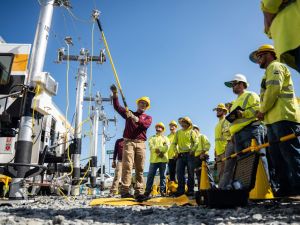
The Evolution of Personal Protective Grounding: Part 2
Part 1 of this article began with discussion of the first American power systems, when lineworkers initially encountered the hazards of working on de-energized lines (see https://incident-prevention.com/blog/the-evolution-of-personal-protective-grounding-part-1/). This led to early personal protective grounding (PPG) efforts using trial and error. We also reviewed Charles Dalziel’s contributions toward a greater industry understanding of dangerous current levels.
In short, Part 1 confirmed the need for PPG as a key lineworker safety precaution. In this second and final part, we will review…
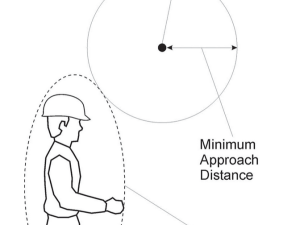
‘Avoid Contact’: Correctly Understanding the MAD Without a Distance
For decades, air has been used to effectively and inexpensively maintain phase-to-phase and phase-to-ground clearances of overhead distribution and transmission power lines and electrical equipment. Air’s extremely high resistance offers excellent protection against the passage of current. The greater the nominal system voltage, the greater the air gap required to prevent a flashover and short-circuiting.
Due to its dielectric properties, air is also used to protect workers from electric shock. Incident Prevention readers who work in the electric utility industry are familiar with the term…
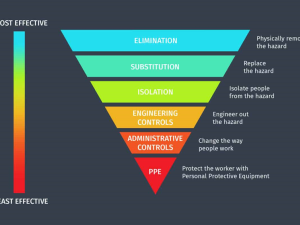
Rethinking Arc Flash Labels for PV Projects
Arc flash labels are a commonplace requirement for photovoltaic (PV) projects. However, arc flash studies and the resulting labels are sometimes treated as check-the-box exercises. In my experience as an engineer, I have found that questions are rarely asked regarding integration of PV arc flash labels into a safe, effective operations and maintenance plan. Engineers who charge by the man-hour can generate these labels all day long, yet they aren’t the ones tasked with donning PPE to perform hot work. A fundamental link is missing in terms of safety.
Essentially, arc flash labels provide e…

